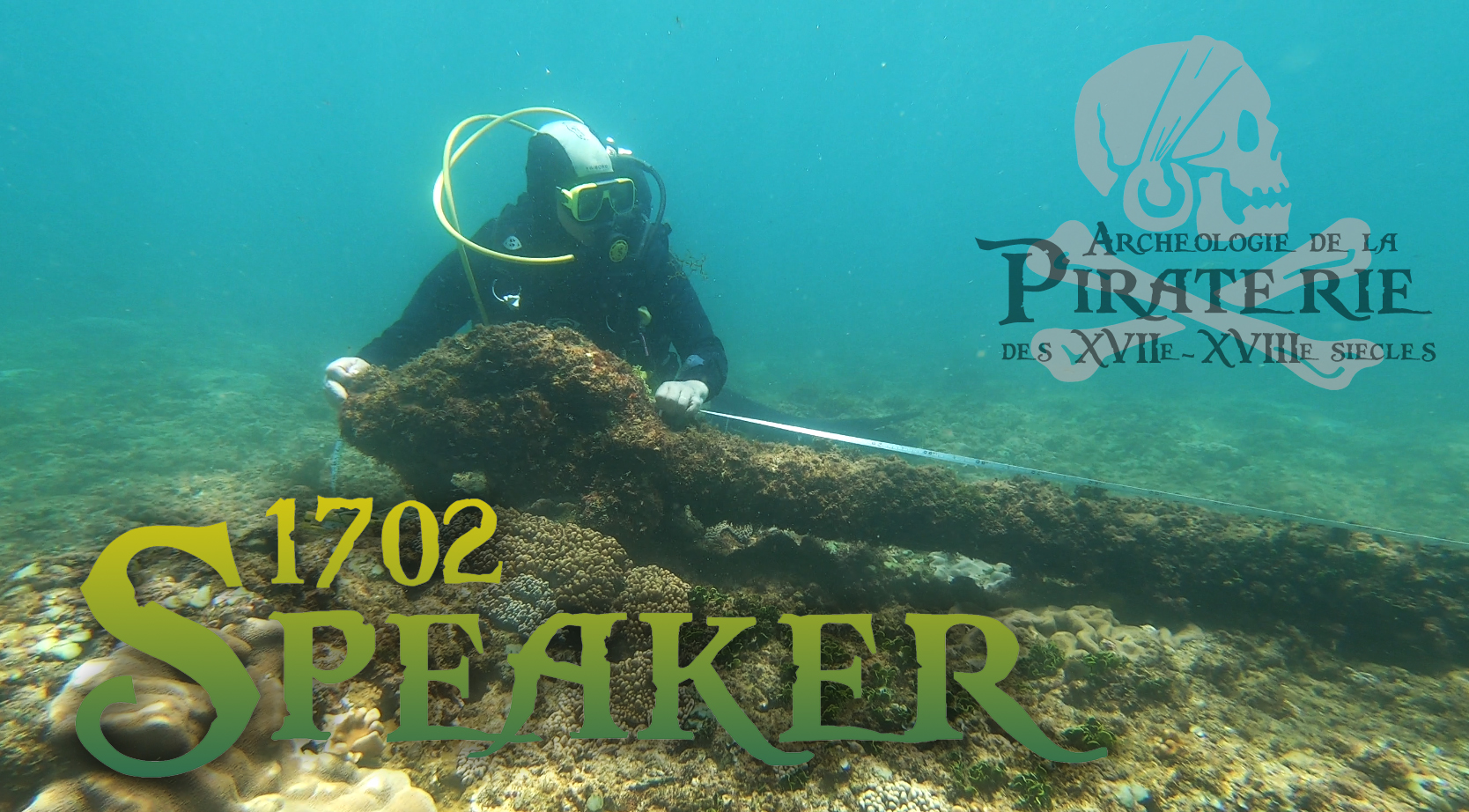With the assistance of the Mauritius Museums’ Council, the Mauritius Marine Conservation Society, and the LandArc Laboratory, an archaeological inventory and study mission of the artifacts from the Speaker pirate shipwreck (1702) took place from March 18 to 27, 2019 at the National Museum of History of Mahébourg. Yann von Arnim and Jean Soulat were able to work on this fabulous collection of more than 1,700 new objects.


The archaeological artifacts come from the shipwreck of the Speaker, the ship of the English pirate John Bowen, that sank on January 7th, 1702 on the east coast of Mauritius, 2.5 km from the coast of Grande Rivière South East. Discovered in 1979 by Jacques Dumas, archaeologist, and Patrick Lizé, French historians and archivists, two partial excavations of the shipwreck were carried out once the discovery was made. The first campaign took place in 1980 during three months under the direction of Jacques Dumas. The second mission took place ten years later with the team of Erick Surcouf. With the absence of proper fieldnotes, these two campaigns did not produce any excavation report. A scientific article by Patrick Lizé published in 1984, republished in 2006, then some works and press articles centered on the life of the famous pirate John Bowen, including a comic strip, unfortunately excluding the analysis and the in-depth study of these exceptional artifacts.

Coupled with this exhaustive study of the objects, the continuation of the investigations on the archaeological site of the Speaker will be envisaged for 2020 with a report on the state of the vestiges of the shipwreck, which, in particular, saw the preservation and curation of 34 cannons and three anchors. The Speaker is the first pirate wreck discovered, identified and scientifically searched in the world, well before the Whydah Galley (1717).
Circumstances of the sinking
The Speaker was a 500-ton French slave ship, the original French name which we do not yet have found. She was taken by the crew of pirate captain Bowen on April 16, 1700, in a Malagasy river in Madagascar. After numerous prizes, the Speaker ran aground near Ilot aux Roches, on the east coast of Mauritius, on the night of January 7th, 1702 due to a storm and a crew drunk on rum.
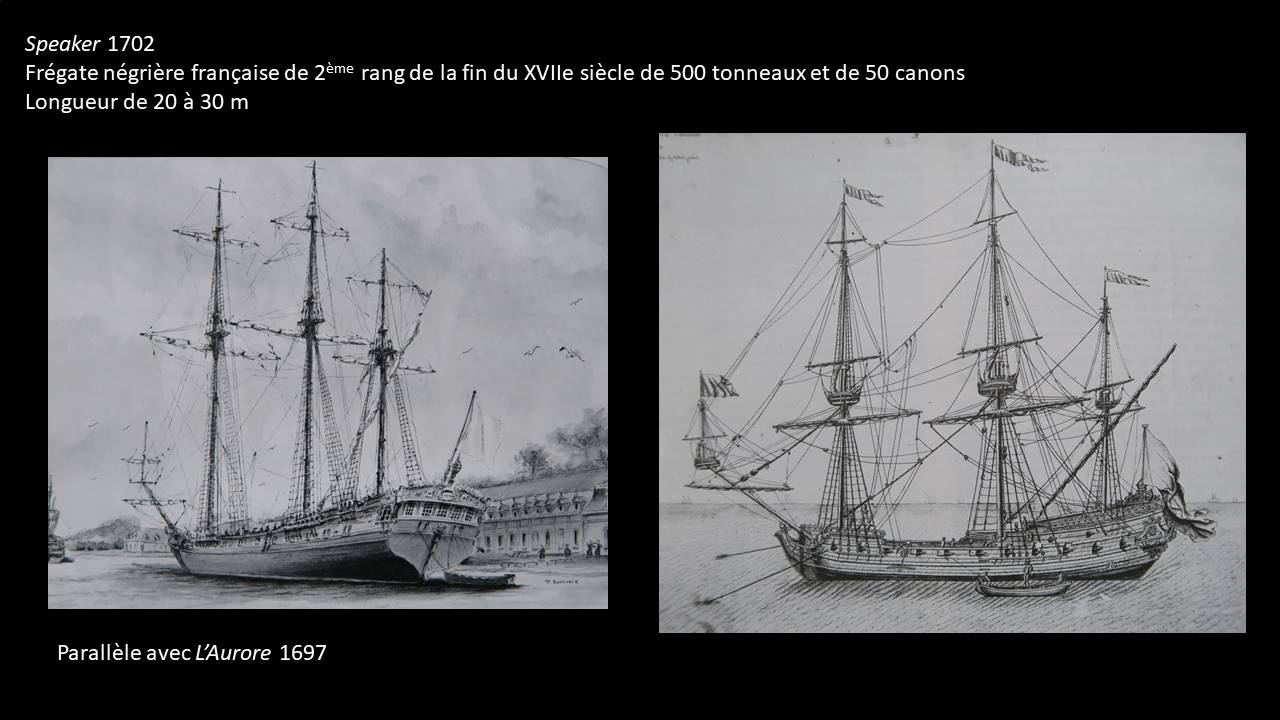
The pirates accidentally landed in Mauritius, jeopardizing the balance of the small Dutch colony established in the Old Grand Port. On January 9th, the governor of the island, Roelof Deodati, who worked for the Dutch East India Company, was alerted to the arrival of the pirates. A camp was set up near a beach while a large chest containing part of the treasure was saved from the sinking. The next day, Captain Bowen and his crew went on a reconnaissance on the island and realized that they were on Mauritius. The pirates negotiated with the governor, who had only 52 soldiers under his command. Wanting to avoid any conflict, Deodati resigned himself to selling the Vliegendehart sloop to the pirates with the aim of pressing them to leave the island as soon as possible. Thus, on March 4th, 1702, John Bowen said goodbye to the small colony and offered the governor 2,000 piastres as a token of his gratitude. Two weeks later, Bowen and his pirate crew arrived in Madagascar.
The Speaker today
The Speaker’s shipwreck still lies at the bottom of the ocean, just behind the Mauritian reef, at the depth of between 3 and 7 meters. Archaeological remains are still numerous since there are 34 cast iron cannons, 3 large cast iron anchors and the yet-to be explored area of the site which most likely retains ship structural elements trapped in coral. No remains of the wooden structure were preserved and discovered so far since the planks of the ship were recovered by the crew the day after the sinking, as was part of the cargo, but a distinct ballast pile covering the keel and keelson have yet to be located. During the 1980 campaign, a general site plan of the site was drawn up showing the extent of the sinking over almost 200 meters, materialized by the cannons which were spilled during the maneuvers of the ship. The archaeological missions that took place were negatively impacted due to the dangerous climatic conditions in the area (typhoon), pushing huge swells against the reef, the current also being a factor. In total, 1,746 objects have been brought up and are now, for the most part, kept at the National Museum of History in Mahébourg, the collection belonging to the Mauritius Museums Council and therefore to the Mauritian government.
A collection of original and heterogeneous objects
Belonging to the material culture of the second half of the 17th-century, 1746 objects were brought up. They are divided into several functional categories: armaments with 1,190 elements (artillery, various munitions, remains of sword guards), 63 objects related to personal effects (clothing accessories, ornaments, knives, pipes, etc.), on-board furnishing with 61 objects (caulking elements, various sheets, chandelier, furniture fittings, remains of a small bell, etc.), a dozen navigation instruments (compass and portable dial), crockery with 98 fragments of glass bottles and ceramic flasks or ceramic containers, beads with 221 incidence, which can both be incorporated into personal effects but also into trade, and finally artifacts linked to trade with 103 objects associated with trade and the slave trade ( gold and lead ingots, shackles), including 34 coins from many localities (England, France, Austria, Germany, Holland, Italy, Mexico, Peru, Egypt, Yemen and India).
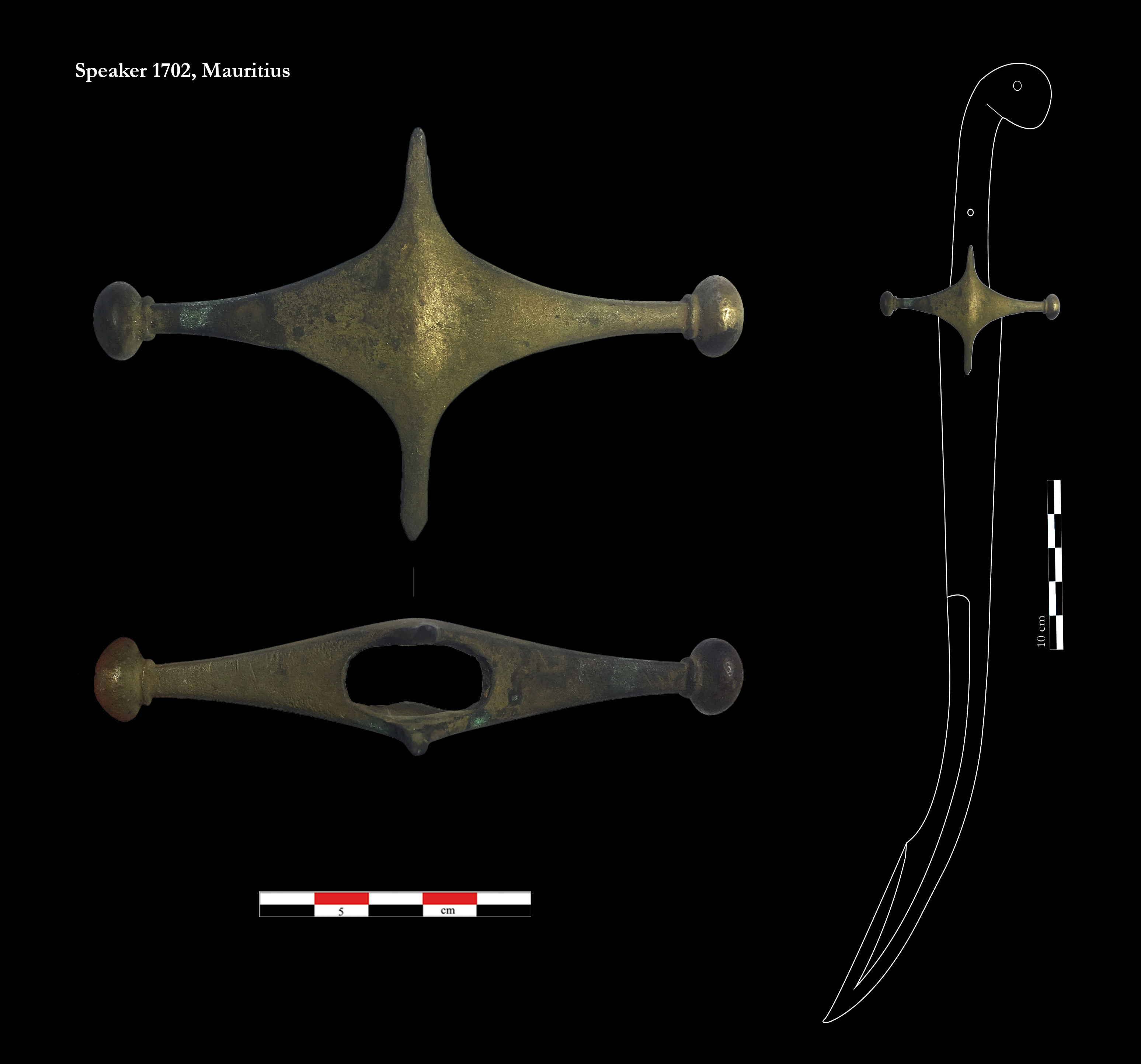

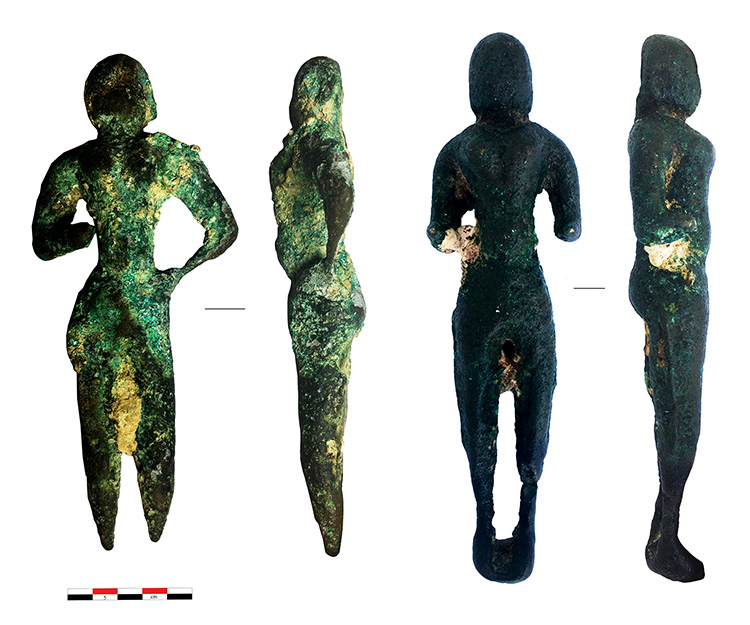
After the detailed inventory, a first analysis of the Speaker’s material culture made it possible to highlight the certain singularity of the artifacts. It is, particularly, the objects found on the shipwreck that make it possible to affirm that the vessel indeed represents a pirate vessel, while archival research, including reports of the sinking, have yet to be located in French archives. But the number of guns make it possible to identify it precisely as a pirate ship. One of the criteria is based, in particular, on the geographic mix of the artifacts. This combines a strong British influence in connection with the English crew of the ship as well as objects from Europe (Italy, France, Germany, Austria, Holland, Spain), the Ottoman Empire, India and China, bearing witness to the multiple prizes made in the Indian Ocean by the crew. Many personal objects that belonged to the pirates were found such as buttons, shoe buckles, British rings and bracelet, an Indian rupee transformed into a medallion with its chain, fragmentary remains of Dutch and English clay pipes, padlocks or knives. The dishes testify to the prizes of multiculturalism with a British brass spoon, remains of a British glass bottle and flask (onion or quadrangular) for alcohol, remains of Asian storage vases from the provinces of southern China, probably from Fujian, shards of Chinese porcelain from the city of Jingdezhen, in the province of Jiangxi (southeast of China), Kangxi period (1662-1722) or fragments of jugs of Rhine sandstone. The second criterion that can be highlighted is the large quantity of weapons on board (1190 occurrences), in particular the importance of the ammunition (104 cannonballs and grenades and 1072 musket shot) which have been preserved and which clearly indicates that this was a vessel ready to engage in combat.
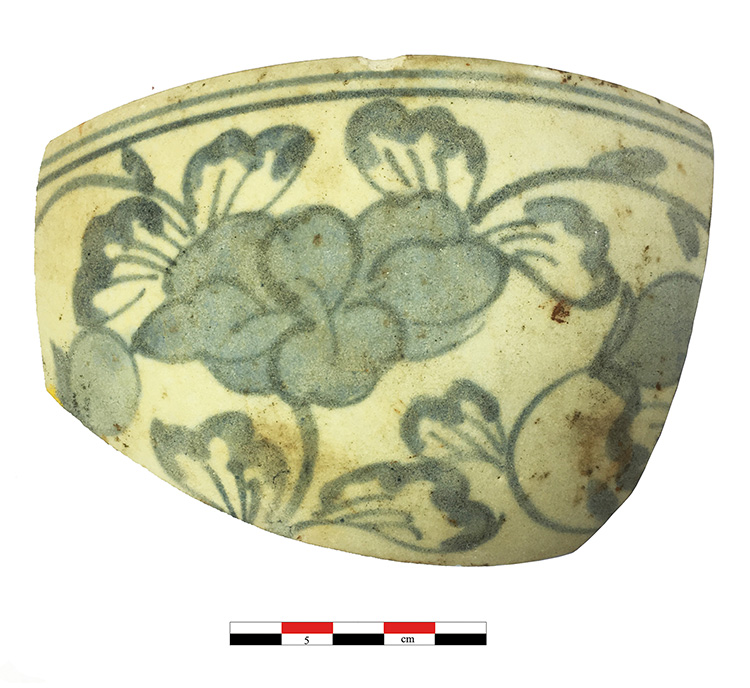
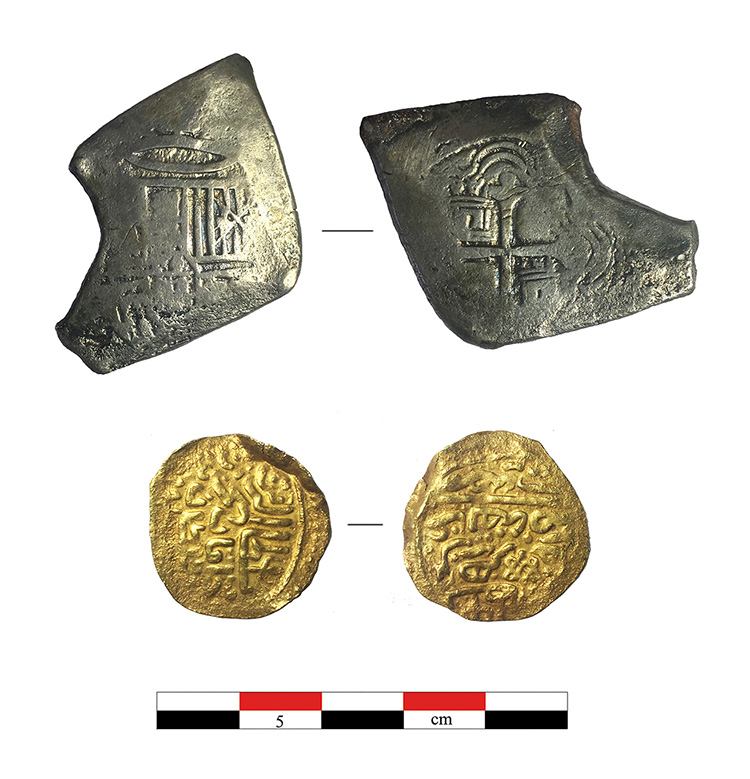
Discovery of a bronze cannon from the Danish East India Company
Among the most significant objects is the only bronze cannon found on the shipwreck. Salvaged in 1984 by South African divers, this 136 kg bronze artillery piece, 1.41 m long, appears to be a 4 to 6 pounder cannon. The coat-of-arms is marked by the presence of a decorated set forming a royal emblem which consists of a 4 inside a C surmounted by a crown and decorated on both sides by scrolls. The visible emblem on this artillery piece is the monogram C4 which represents Christian IV, king of Norway and Denmark between the years 1588 and 1648. He founded the Danish East India Company in 1616. Thus, this cannon very probably belonged to a ship of this particular company, a ship taken by Captain John Bowen at the very beginning of the 18th century.

Archaeological mission in 2021
Following this re-examination of the artifacts, a team of underwater archaeologists under the direction of Jean Soulat and Yann von Arnim will return to the sinking site in November 2021 for a period of 10 days. The objectives of this mission are oriented around the digital mapping of the remains of the shipwreck (cannons and anchors) using a photogrammetric plan developed through the use of an ROV. It is also a matter of establishing a provisional report of the remains, coming out with an inventory as well as measurements, or even trying to find architectural remains of the ship's structures. Finally, the ultimate objective of the mission is to carry out a 2x2 m test survey in order to try to bring to light new information on the wreck and life aboard of pirates and their captain John Bowen, through the discovery of new artifacts and possibly, structural remains.
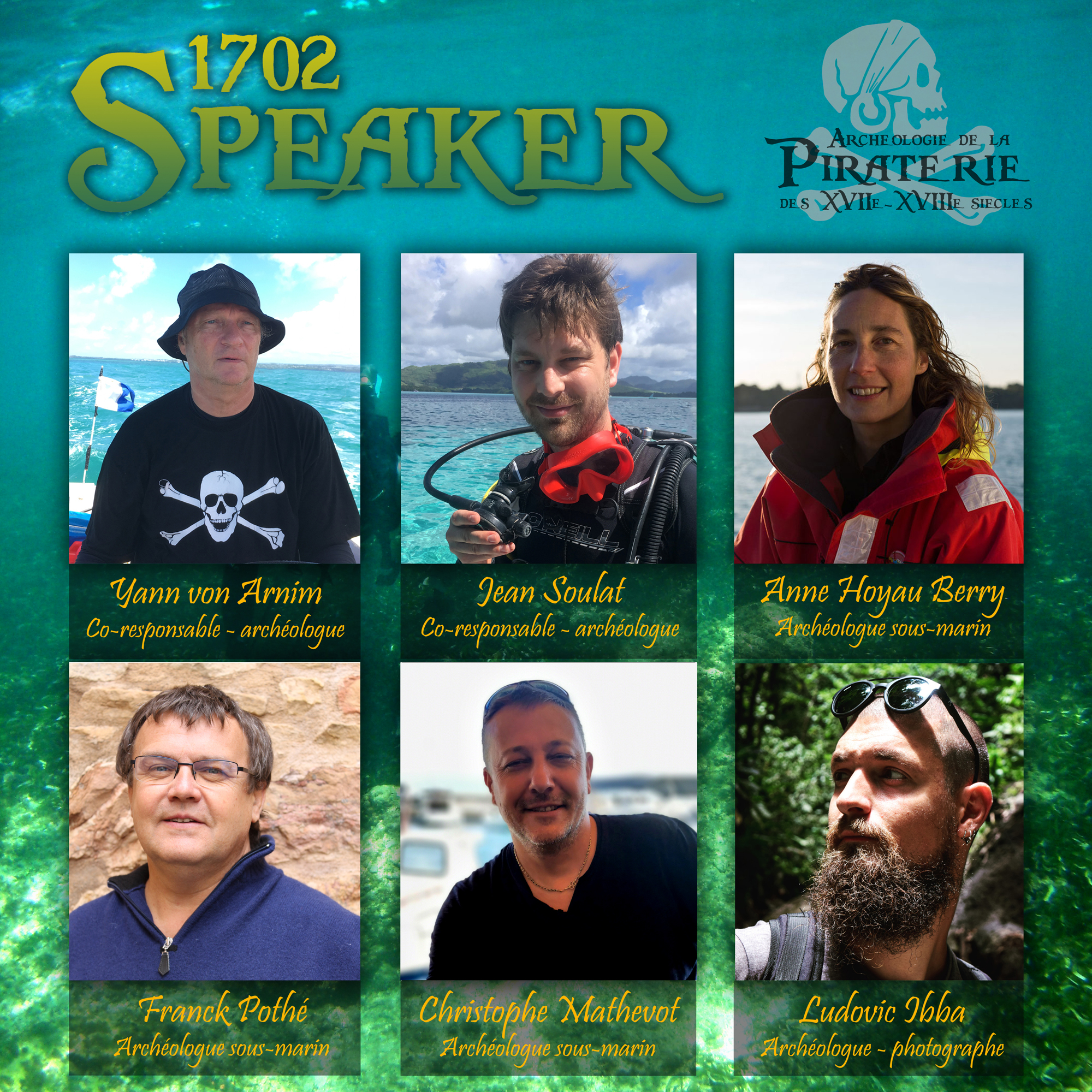
The Speaker 2021 mission was a great success. The report is available in the ADLP Editions section.

References
von Arnim et al. 2019 :
Y. von Arnim, P. Lizé, J. Soulat, « L’épave du Speaker 1702, navire pirate de John Bowen (Grande Rivière Sud-Est, île Maurice) », dans J. Soulat (dir.), Archéologie de la Piraterie des XVIIe-XVIIIe siècles. Etude de la vie quotidienne des flibustiers dans les Caraïbes et l’océan Indien, Hors collection, Editions Mergoil, 2019, p. 97-107.
Lizé 1984 :
P. Lizé, « The Wreck of the Pirate Ship Speaker on Mauritius in 1702 », The International Journal of Nautical Archaeology and Underwater Exploration, 13, 2, 1984, p. 121-132.
Lizé 1987 :
P. Lizé, La véritable histoire du pirate Bowen, Editions Jacques Glénat, Grenoble, 1987.
Lizé 2006 :
P. Lizé, « Piracy in the Indian Ocean. Mauritius and the Pirate Ship Speaker », dans R. K. Skowronek, C. R. Ewen (dir.), X Marks the Spot. The Archaeology of Piracy, Gainesville, University Press of Florida, 2006, p. 81-99.
Piat 2014 :
D. Piat, Pirates et Corsaires à l'île Maurice, Editions du Pacifique, 2014.
Soulat et al. 2019 :
J. Soulat, Y. von Arnim, P. Lizé, « L’épave pirate du Speaker et son mobilier », A la Découverte des Pirates, Dossiers d’Archéologie, 394, 2019, p. 46-49.
Soulat et al. 2019 :
J. Soulat, Y. von Arnim, P. Lizé, « Le mobilier de l’épave pirate du Speaker 1702 », dans J. Soulat (dir.), Archéologie de la Piraterie des XVIIe-XVIIIe siècles. Etude de la vie quotidienne des flibustiers dans les Caraïbes et l’océan Indien, Hors collection, Editions Mergoil, 2019, p. 245-267.
